The three-toed box turtle (Terrapene carolina triunguis) is a 5-7” long species of terrestrial turtle native to the central United States. They can most often be found in moist woodlands with plenty of leaf litter and woody debris.
Three-toed box turtles generally have a tan to olive carapace, dark skin, and yellow or orange spots on their forelegs. Males may have a red head. Although they are technically turtles, three-toed box turtles have highly domed shells with a hinged plastron that “seals” them inside when they feel threatened.
Box turtles are popular pets, but they’re not a beginner-level turtle. If you’re ready to take on the commitment and provide the care they need, they may have a lifespan of 50+ years!
Do not steal turtles from the wild to keep as pets!
Minimum enclosure size for three-toed box turtles
The minimum acceptable enclosure size for a three-toed box turtle is 8 sq feet of floor space. Because they need high levels of humidity, it’s best to avoid using an open enclosure like a tortoise table if housing indoors. However, outdoor pens can work very well if properly secured against potential escape, and if you have the choice, it’s better to house a box turtle outdoors than indoors. The walls should be at least 20” tall, secured against predator entry, and extend at least 10” underground to combat burrowing.
Cohabitation (housing multiple box turtles in one enclosure) is not required for the turtles’ wellbeing, but they are known to get along alright in groups when the enclosure is sufficiently large. Avoid housing males together.
Do three-toed box turtles need UVB?
Yes, three-toed box turtles require regular exposure to UVB light to maintain good health. The best UVB bulbs for three-toed box turtles are:
- Arcadia T5 HO 12%
- Zoo Med T5 HO Reptisun 10.0
However, if your box turtle is being housed outside and has access to direct sunlight, artificial UVB lighting is not required.
Your UVB bulb should be half the length of the enclosure, mounted in a reflective Arcadia or Vivarium Electronics fixture, and placed 17-18” above the top of the turtle’s shell in the basking area. The fixture should be inside of the enclosure, not outside.
Since box turtles are a diurnal species, it’s helpful to also install a 6500K T5 HO fluorescent grow light in the enclosure for additional illumination. However, this should be no more than half the length of the enclosure and mounted on the warm side.
Lamps should be on for 14 hours/day during summer and 10 hours/day during winter. This is likely to boost your turtle’s long-term health by encouraging natural hormonal rhythms.
Best temperature for three-toed box turtles
Like other reptiles, three-toed box turtles are cold-blooded, which means that they rely on external temperatures to manage their own body temperature and metabolism. A reptile’s enclosure should offer a range of temperatures to allow them to thermoregulate effectively.
Specifically speaking, three-toed box turtles should have a basking temperature between 84-88°F. On the other side of the enclosure, the temperature should be between 70-75°F. These temperatures should be measured with at least two digital probe thermometers. Heating should be turned off at night.
Provide heat for your box turtle with a halogen flood heat bulb mounted in a ceramic fixture. Do not use ceramic heat emitters (CHEs), red bulbs, or blue bulbs, as these are not as effective.
If you are housing your box turtle outdoors, make sure air temperatures only rarely exceed 90°F, as these turtles overheat easily. However, they can tolerate nighttime temps as low as 50°F, so nighttime heating should not be necessary during most of the year.
Best humidity levels for three-toed box turtles
Three-toed box turtles need an average humidity of 60-80%. There should also be a humid hide on the cool side, lined with moistened sphagnum moss. Humidity should be measured via digital probe hygrometer, with the probe placed in the middle of the enclosure.
Increase humidity by misting the enclosure 1-2x/day with a pressure sprayer. Mist first thing in the morning and then again at night if needed. Mixing water directly into the substrate also helps with maintaining high humidity.
If you are housing your box turtle outdoors, humidity should not be much of an issue as long as you don’t live in a particularly dry climate. Just make sure to provide free access to a shallow puddle of water, shade, and plenty of lightly moistened leaf litter.
Hatchlings and juveniles should be soaked in a tub of shallow water 1-2x/week for 10-15 minutes per session to make sure they’re staying hydrated.
Best substrate for three-toed box turtles
Providing a thick layer of naturalistic substrate (“bedding”) will help maintain correct humidity levels and also provide something for your turtle to dig in as desired. We recommend the following substrates for three-toed box turtles:
We also recommend providing a thick layer of leaf litter for enhanced humidity and enrichment value. If you are housing your box turtle outdoors, provide areas of different types of substrate (sand, mulch, leaf litter, stone, soil, grass, etc.) for more effective thermoregulation.
Substrate should be at least 4” deep and completely replaced every 3-4 months. Remove poop and urates daily, along with contaminated substrate.
How to decorate a three-toed box turtle enclosure
An empty terrarium makes for a bored turtle, reducing its quality of life. Keep your pet entertained and engaged with its environment with the strategic use of décor items that encourage it to exercise natural behaviors!
Here are some ideas to get you started:
- piles of leaf litter
- additional hiding places/burrows
- large hollow logs
- live, edible plants/shrubs
- large, flat stones
- wood piles
- dirt mounds
The more stuff you add, the more functional your enclosure is likely to become!
What to feed to a three-toed box turtle
Three-toed box turtles are omnivorous, which means that they need both plant- and animal-based foods in order to get the right nutrition. For best health, offer a balance of 45% plants and 55% low-fat animal protein.
Young and growing turtles younger than 5 years old should be fed daily to every other day, while turtles older than 5 years should be fed 2-3x/week. For best results, offer food first thing in the morning.
Protein sources for three-toed box turtles: cockroaches, earthworms, mealworms, superworms, snails, millipedes, grasshoppers, crickets, moths, hornworms, silkworms, black soldier fly larvae, darkling beetles, pinky mice, quail chicks, wet cat food
Safe vegetables for three-toed box turtles: cactus pads, kale, collard greens, turnip greens, mustard greens, dandelion greens + flowers, watercress, broccoli, escarole, swiss chard, parsley, spinach, endive, romaine lettuce, hibiscus leaves + flowers, nasturtium, honeysuckle
Safe fruits for three-toed box turtles: grapes, blackberries, cherries, strawberries, plums, apples, persimmons, cantaloupe, mulberries, tomatoes
Note that fruits should be more of a treat than a frequent part of your turtle’s diet.
Supplements
You will also need calcium and vitamin supplements to prevent your turtle from developing a potential deficiency. We recommend Repashy Calcium Plus LoD, lightly dusted on each protein item. Occasional use of Repashy Superpig as a carotenoid supplement is a good way to help maintain your turtle’s vibrant color.
Water
Of course, don’t forget a water bowl! Three-toed box turtles like to soak, especially on warm days, so you will need a shallow “puddle” of water for them to soak in and drink from. Baking trays work well for this. Change the water daily and scrub the dishes weekly with a reptile-safe disinfectant, or whenever it becomes soiled with feces.
How to handle your three-toed box turtle
Reptiles generally don’t appreciate petting and handling in the same way that dogs and cats do. That being said, three-toed box turtles generally tolerate human interaction pretty well! If you have to pick up your turtle, be gentle and try to pick it up from the side or below rather than from above. Handling should be minimized, but they do tend to appreciate gentle scratches and treats.
*This care sheet contains only very basic information. Although it’s a good introduction, please further your research with high-quality sources. The more you know, the better you will be able to care for your pet!
"Three-Toed Box Turtle (Terrapene carolina triunguis)" by 2ndPeter is licensed under CC BY 2.0

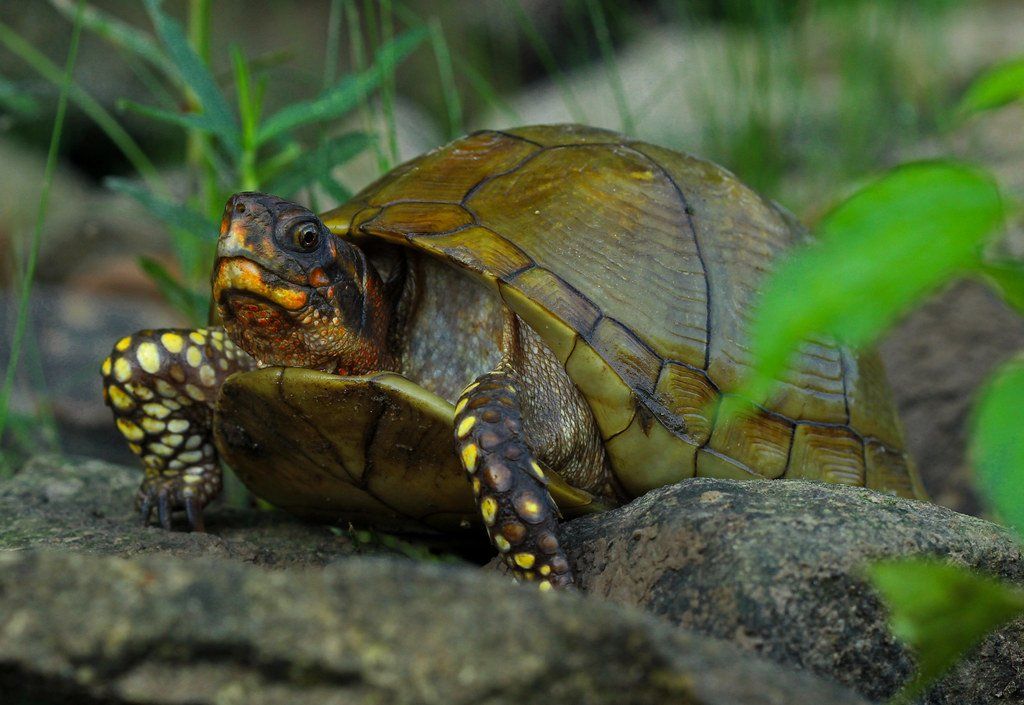


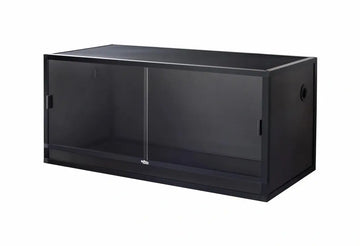

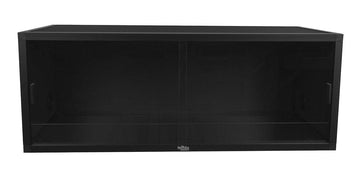

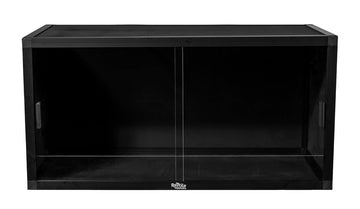
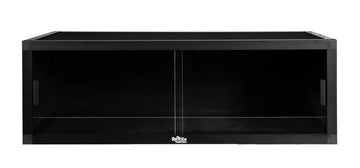


2 comments
Hi Laura — It’s best not to use a dog bowl as a water bowl for terrestrial turtles, as turtles are not very flexible and so it’s hard for them to climb out.
Are metal dog bowls OK to use as water bowls for my turtle